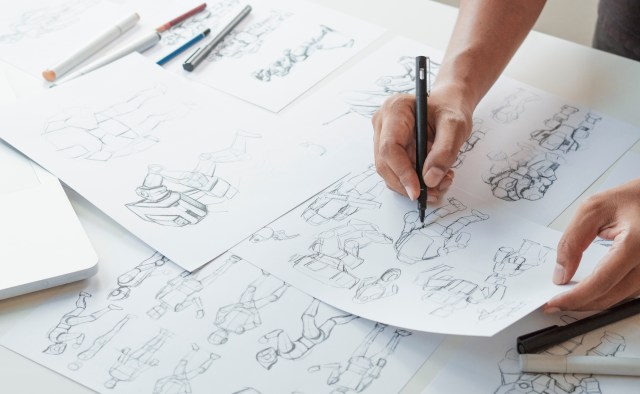
Animation has come a long way since its humble beginnings, evolving from hand-drawn pencil sketches to the seamless digital creations we see on the big screen today. The evolution of animation in cinema has not only revolutionized the entertainment industry but has also opened up new possibilities for storytelling and visual effects. In this article, we will take a journey through time and explore the different stages of animation’s evolution, from its early days to its current state.
The Birth of Animation: From Flipbooks to Celluloid
The history of animation can be traced back to the 19th century when artists began experimenting with techniques that would eventually lead to motion pictures. One such technique was the flipbook, which allowed artists to create simple animations by drawing a series of images on separate pages that could be flipped rapidly to create an illusion of movement.
However, it was not until the invention of celluloid film in the late 1800s that true animation as we know it today began to take shape. Celluloid allowed artists to draw individual frames and then photograph them onto transparent sheets. These sheets could then be played in sequence, giving birth to the first animated films.
Hand-Drawn Animation: A Labor-Intensive Artform
For many years, hand-drawn animation was at the forefront of the industry. Artists meticulously drew each frame by hand, creating smooth and fluid movements that brought characters and stories to life. This labor-intensive process required immense skill and patience, as even a short animated sequence could involve thousands of individual drawings.
One notable milestone in hand-drawn animation was Walt Disney’s release of “Snow White and the Seven Dwarfs” in 1937. This full-length feature film was a groundbreaking achievement that showcased the potential for storytelling through animation on a grand scale.
The Rise of Computer Animation: Blending Art and Technology
In the late 20th century, computer animation began to revolutionize the industry. With the advent of powerful computers and sophisticated software, artists could now create animations digitally, eliminating the need for hand-drawn frames. This new medium allowed for greater flexibility, efficiency, and realism in animation.
One of the most significant milestones in computer animation was Pixar’s release of “Toy Story” in 1995. This film marked the first entirely computer-animated feature-length film and set a new standard for what was possible in the world of animation. Since then, computer animation has continued to advance rapidly, with films like “Frozen” and “The Incredibles” pushing the boundaries of visual effects and storytelling.
The Future of Animation: Virtual Reality and Beyond
As technology continues to evolve, so does animation. Virtual reality (VR) is one area that holds immense potential for the future of animated storytelling. VR allows viewers to immerse themselves in animated worlds like never before, creating a truly interactive and immersive experience.
Additionally, advancements in machine learning and artificial intelligence are also shaping the future of animation. These technologies can automate certain aspects of the animation process or even generate animations entirely on their own.
In conclusion, the evolution of animation in cinema has been a remarkable journey from pencil sketches to digital creations. Hand-drawn animation paved the way for storytelling through movement, while computer animation brought about a new era of possibilities with its blend of artistry and technology. As we look towards the future, virtual reality and emerging technologies promise even more exciting developments in this ever-evolving art form.
This text was generated using a large language model, and select text has been reviewed and moderated for purposes such as readability.






